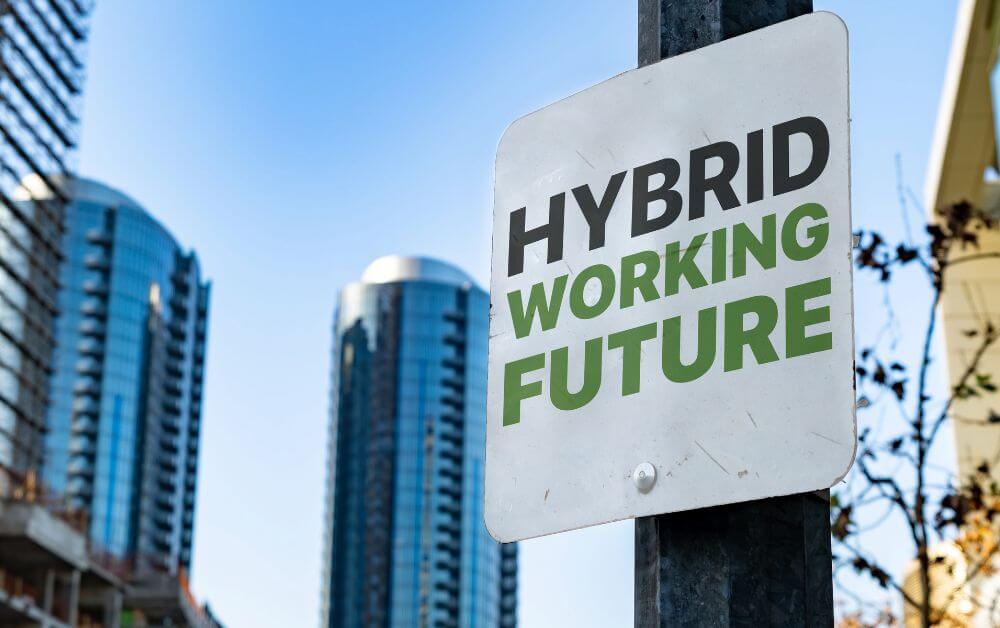Today’s insights are brought to you by my colleague and global futurist, Graeme Codrington.
Last week, Zoom informed their employees that those who live within 50 miles of the office were required to be in the office at least two days a week from now on. Yes, THAT Zoom. When Zoom stops working from home, it might be a sign that things are really confusing at the moment.
A lot of companies are still struggling to get their hybrid policies right. One of the biggest mistakes they’re making is to not realise that this is a future of work issue. Too many are having a “back to office” or “Covid recovery” conversation instead. What they should be doing is learning lessons from the last few disrupted years, but focusing very clearly on building a working environment that is future-proof for the rest of the decade.
There are three important components to having the hybrid conversation correctly:
1. Acknowledge that the office is a tool, not a destination.
Those people who want their teams back at the office normally have a list of reasons for doing so, including more interaction, better mentoring and support, improved communication and collaboration, and better problem-solving. There is no doubt that some people can do some things better when they are together with the rest of their team. But this is not true for everyone; nor is it true for every activity.
It’s worth having conversations about what exactly we hope to achieve by coming to the office together, and then ensuring that we set up our offices and team schedules in order to get these benefits. A lot of clients I am working with do not actually deliver the benefits of the office that they say they want.
If the office is indeed the best place for your team to work on certain issues, then make sure you actually get those benefits. This will most likely require adjustments to the physical spaces you work in, agreements about core hours and team days (it’s not use Zoom mandating two days a week, but different team members choose different days of the week for this), and ongoing assessment of whether you’re actually getting the desired benefits.

2. Understand that hybrid means constant adjusting and not a new fixed policy.
Related to this is the understanding that if something works for your team this month, it might not work next month. The last week of the month is hectic for the accounts team, for example, but not necessarily for L&D and the middle of the month might be quite calm for the accounts team, but not for sales and marketing. Juniors and new Joiners will get value from being with senior and more established colleagues – for a time; but might not need it forever.
Any company that has a “fixed” hybrid policy hasn’t really understood the assignment, have they? Your hybrid policies need to have built-in flexibility and levels of autonomy, otherwise, the only thing hybrid about them is their title.
This is one of the key ways you can turn this issue into a future of work advantage. The companies that build good hybrid environments will discover that talented people will be drawn to them, that productivity will be maintained and that employee engagement increase.

3. Experiment and follow the data.
Don’t trust me and what I say. Work out what works best for your team. But equally, don’t trust your managers or your loudest colleagues either. We are all in uncharted territory, and the best way forward is to experiment and discover what works best (recognising that this will continue to be in flux forever).
Don’t be too quick to approve or deny the requests of your colleagues – rather, ask them to come up with experiments that minimise the risk and resources required to try something, and then… give it a go. And then do that again, and again, and again.
We know we can survive working at home. We also know we can endure working at the office. We’ve had experience of both now, and neither extreme is ideal. The best solution lies somewhere in between. Actually, the data tells us that when people ask for hybrid or flexible options, what they really want is to be trusted to organise their lives in order to give their best.
It turns out that what people really want is autonomy. No one can ever have true autonomy to do whatever they want, but the more ways in which you can give people autonomy the more they will reward you with productivity, discretionary effort, engagement and loyalty.
It might feel dangerous to give your people more autonomy, allowing them to be more hybrid rather than less. It isn’t. It’s much more dangerous to be controlling, rigid and backward thinking because it will be your best people who will leave that kind of workplace first.

Are you ready to shape a future-focused, progressive work environment? Let’s connect and explore how our team can help your organization harness the power of hybrid work. Book Graeme or Buhle for an engaging keynote presentation or a facilitated workshop, and together, we’ll lay the foundation for a successful future.
Make sure that your “back to the office” policies are future-focused and progressive, and actually deliver what you really need.
Author of today’s tip, Graeme Codrington, is an internationally recognized futurist, specializing in the future of work. He helps organizations understand the forces that will shape our lives in the next ten years, and how we can respond in order to confidently stay ahead of change.
For the past two decades, Graeme has worked with some of the world’s most recognized brands, travelling to over 80 countries in total, and speaking to around 100,000 people every year. He is the author of 5 best-selling books, and on faculty at 5 top global business schools.


